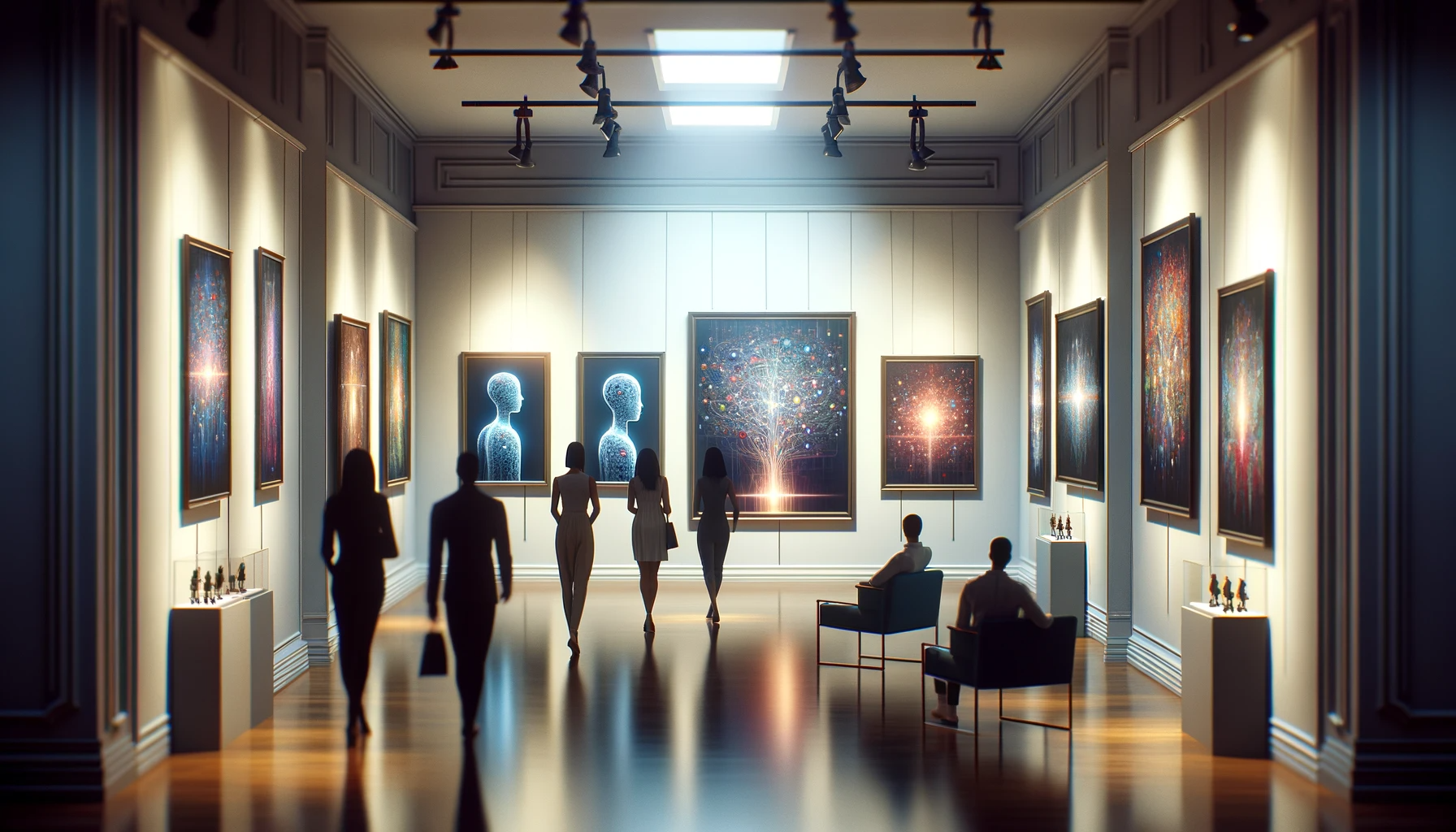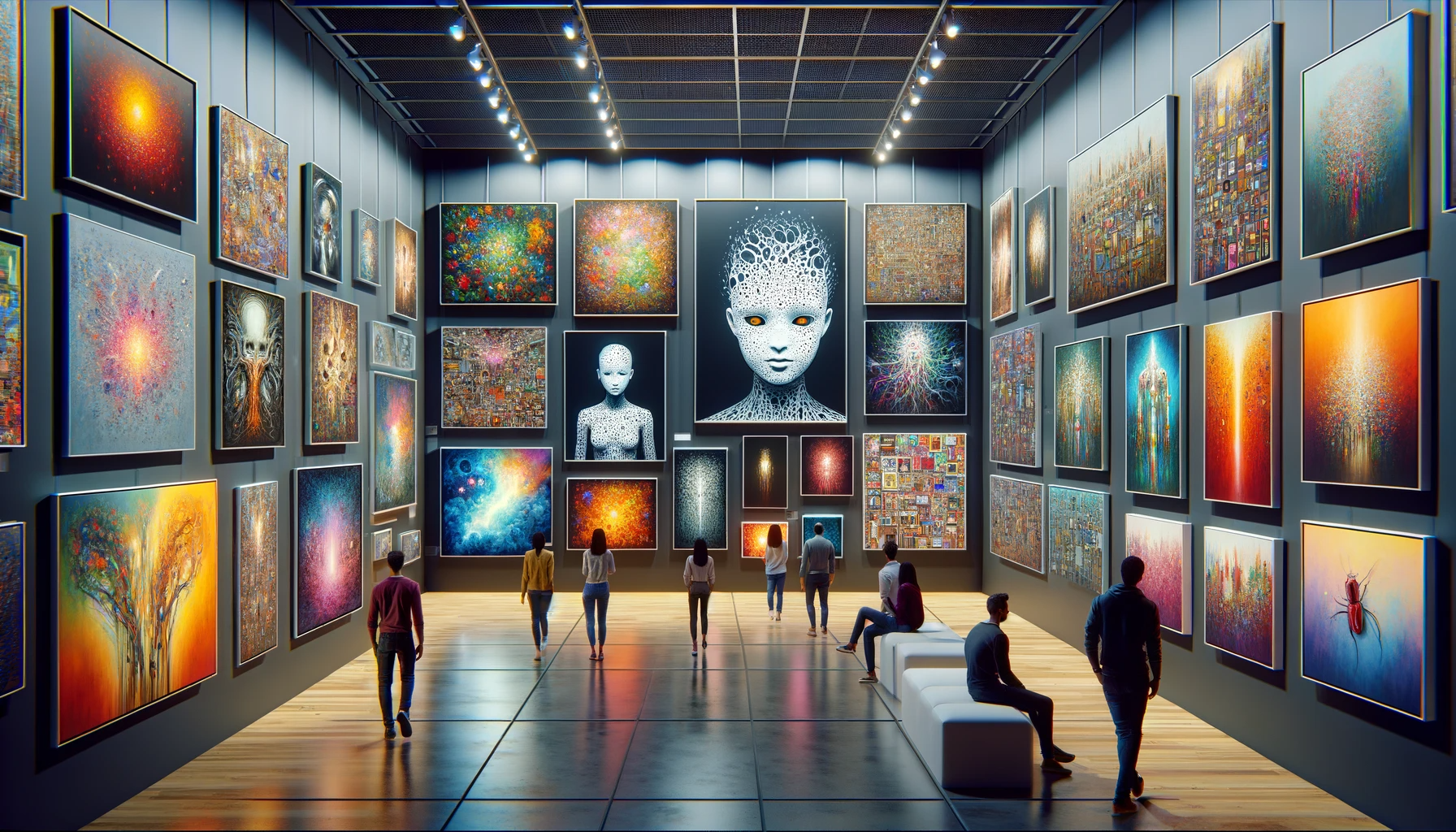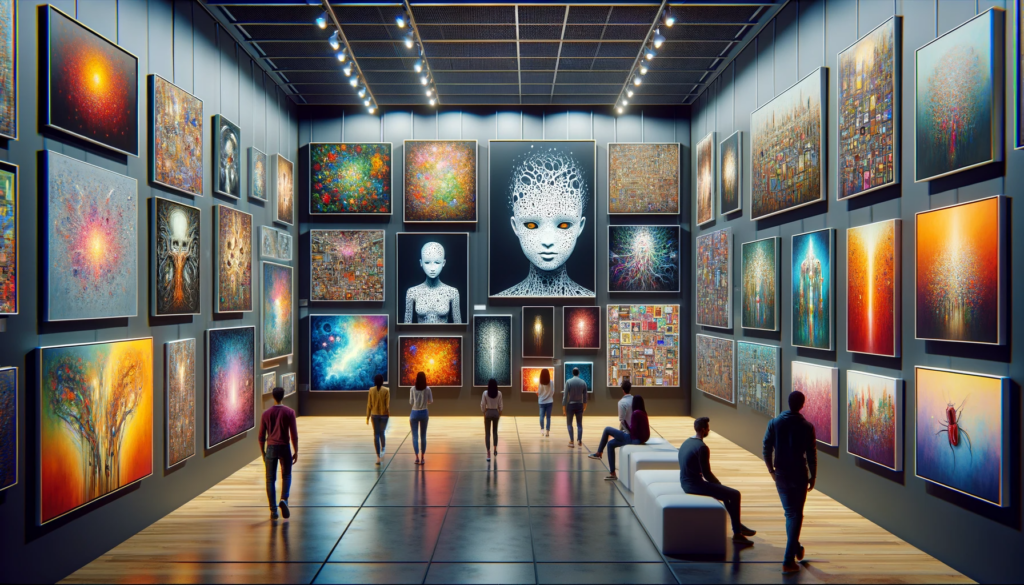In the ever-evolving realm of art, the emergence of artificial intelligence (AI) has sparked a profound debate: Are AI-generated artworks truly original? As AI technology advances, it has begun to play a significant role in the creation of art, from paintings and sculptures to music and literature. But the question of originality, deeply ingrained in the discourse of art, looms large. Do these AI creations possess genuine creativity and originality, or are they merely products of algorithms and data?
The integration of AI into the world of art represents a remarkable journey. From its early experiments with generative algorithms to the contemporary AI art projects of today, technology has continued to push the boundaries of creativity. AI systems, fueled by the power of neural networks and machine learning, can now generate a vast array of art forms that challenge conventional notions of human creativity. These AI-generated artworks encompass abstract paintings, intricate music compositions, and even literature, raising intriguing questions about the nature of artistic creation and the role of technology in it.
Defining Originality in Art
Before we dive into the realm of AI-generated art, it’s crucial to consider the multifaceted concept of originality in art. Traditionally, originality has been closely associated with human imagination, creativity, and the expression of individuality. Artists, throughout history, have been celebrated for their unique perspectives and the ability to create something entirely new and groundbreaking. Originality in art often implies a departure from the familiar, a bold venture into uncharted territory, and an innovative interpretation of the world.

However, as technology continues to blur the lines between human and machine creativity, the definition of originality in art becomes increasingly complex. The age-old question of whether originality is an intrinsic quality or a construct influenced by context and perception gains newfound relevance in the context of AI-generated art. Can a creation be considered truly original if it emerges from an algorithm, even if the algorithm itself draws inspiration from existing human-made artworks?
The AI Creative Process
To truly understand whether AI-generated artworks are genuinely original, we must delve into the mechanics behind their creation. AI systems, often guided by human artists and programmers, rely on vast datasets and complex algorithms to produce art. The creative process involves the training of neural networks on existing artworks, enabling AI to generate new pieces. This collaboration between human intent and machine creativity gives rise to a hybrid creative process that challenges traditional notions of authorship.
In essence, AI art creation involves a twofold process: data-driven learning and algorithmic generation. AI systems analyze vast amounts of data, including paintings, music compositions, or texts, to identify patterns, styles, and techniques. Through this data-driven learning phase, AI systems gain an understanding of the nuances that define various artistic forms. Subsequently, they employ algorithms to create new pieces that draw upon this learned knowledge.
The key aspect to consider is the role of human involvement in curating, training, and guiding AI systems. While AI plays a significant role in the generation of art, human artists and programmers act as orchestrators, selecting the data, determining the algorithms, and providing the overarching creative vision. This collaboration between human and machine opens up new possibilities for artistic expression while also challenging our perceptions of authorship and originality.
The Role of Data and Influence
One of the central questions surrounding AI-generated art is the role of data and influence. AI systems rely on extensive datasets and the collective knowledge encapsulated within existing artworks to generate new pieces. They analyze the styles, techniques, and thematic elements present in these datasets to produce something new. Critics argue that AI-generated art is, at its core, an amalgamation of existing artistic styles and ideas, calling into question the originality of these creations.
The influence of past artists and their works is a prominent aspect of AI art creation. AI systems, in their data-driven learning phase, draw inspiration from a vast reservoir of artistic knowledge. Whether it’s mimicking the brushstrokes of famous painters, emulating musical compositions reminiscent of classical maestros, or generating literature in the style of renowned authors, AI-generated art inherently carries the imprints of its human predecessors.
This raises concerns about whether AI art might inadvertently infringe upon copyright or perpetuate the influence of past artists without adding substantially to the creative discourse. Critics argue that AI art often lacks the depth of emotional and cultural context that human artists bring to their work, leading to the perception of shallowness and imitation rather than true originality.
Perceptions of Originality in AI Art
The perception of originality in AI-generated art varies widely among audiences and the art community. Some view AI-generated artworks as genuinely original expressions of machine creativity, celebrating their ability to produce innovative pieces that challenge artistic norms. Supporters argue that AI systems can combine elements from different art styles, creating unique compositions that may not have emerged otherwise. They see AI-generated art as a form of creative collaboration between humans and machines, pushing the boundaries of what is possible in art.
Conversely, there are those who perceive AI-generated art as derivative and lacking true innovation. Skeptics argue that AI systems, despite their ability to mimic artistic styles, lack the deep emotional and cultural understanding that human artists bring to their work. AI-generated art is often seen as an emulation of existing styles rather than a genuine exploration of new creative territories. Critics contend that originality in art is rooted in the human experience, emotions, and context, elements that AI struggles to fully comprehend.
Furthermore, the novelty of AI-generated art challenges traditional notions of artistic creation and authorship. Questions arise about the role of the artist in AI art—whether the artist is the human creator who curates and trains the AI or the AI system itself, which executes the creative process. This evolving perception of authorship further complicates the assessment of originality in AI-generated art.

The Future of AI-Generated Art and Originality
As AI technology continues to advance, the future of AI-generated art remains uncertain yet promising. The relationship between human artists and AI tools is evolving, opening new creative possibilities. Artists are increasingly collaborating with AI systems to explore uncharted artistic territories, leading to innovative and thought-provoking pieces. This evolving synergy between human and machine creativity challenges preconceived notions of the role of technology in art.
The implications of AI-generated art extend beyond the creative realm and into the art market and the broader creative industries. AI-generated artworks have been sold at auctions for substantial sums, leading to discussions about the value of such creations and their place in the art market. Additionally, copyright and ownership issues related to AI art are yet to be fully resolved, posing legal challenges and ethical considerations.
In conclusion, the debate over whether AI-generated artworks are truly original is a multifaceted and evolving one. AI systems have demonstrated the capacity to produce stunning and innovative pieces of art, challenging traditional boundaries. However, the question of whether AI art possesses genuine creativity remains open to interpretation. As AI continues to push the boundaries of art, it invites us to reconsider traditional notions of originality and the evolving role of technology in the creative process. The intersection of AI and art prompts us to explore the limitless possibilities that arise when human ingenuity collaborates with machine intelligence, offering a tantalizing glimpse into the future of artistic expression.
